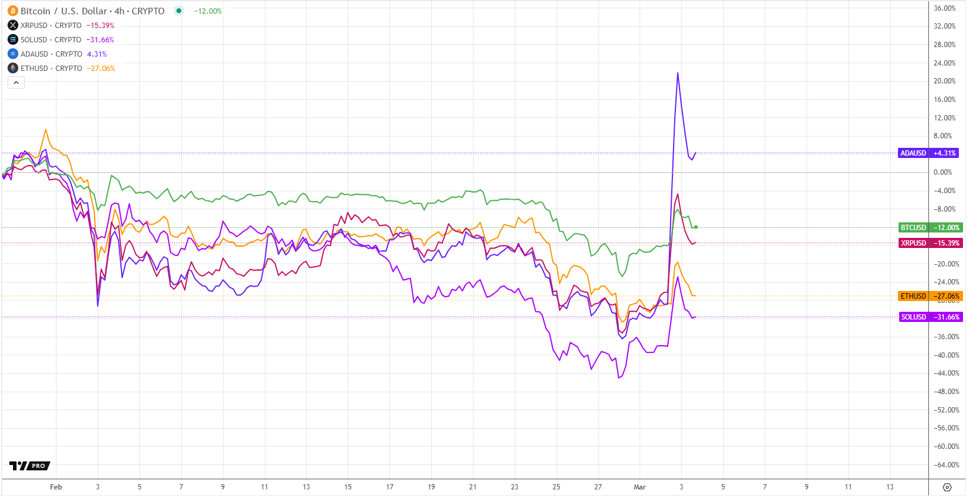The successful birth of three dire wolf pups by Colossal Biosciences represents the culmination of a sophisticated scientific process that transformed degraded genetic material from ancient fossils into living, breathing animals. This step-by-step journey from extinction to resurrection illuminates the remarkable integration of paleogenomics, computational biology, gene editing, and reproductive technology that made this achievement possible.
Step 1: Ancient DNA Extraction and Analysis
The process began with obtaining genetic material from two dire wolf fossils: a 13,000-year-old tooth from Sheridan Pit, Ohio, and a 72,000-year-old inner ear bone from American Falls, Idaho. These remnants contained highly degraded DNA fragments, presenting substantial challenges for analysis.
Colossal’s team deeply sequenced the extracted DNA and used a novel iterative approach to assemble high-quality ancient genomes, resulting in a 3.4-fold coverage genome from the tooth and 12.8-fold coverage genome from the inner ear bone. Together, this data provided more than 500 times more coverage of the dire wolf genome than was previously available.
This comprehensive genomic analysis led to new discoveries about dire wolf evolution. The team determined that gray wolves are the closest living relatives of dire wolves, sharing 99.5% of their DNA. They also found that dire wolves emerged through hybridization between two ancient canid lineages between 3.5 and 2.5 million years ago, helping explain previous uncertainty about their origins.

Step 2: Identifying Key Genetic Variants
With the dire wolf genome reconstructed, researchers identified the specific genetic differences that gave dire wolves their distinctive traits. The team discovered multiple genes undergoing positive selection linked to skeletal structure, musculature, circulatory system, and sensory adaptations unique to dire wolves.
Notably, they identified dire wolf variants in pigmentation genes revealing that dire wolves had a white coat color—a fact impossible to determine from fossils alone. They also found specific variants in regulatory regions that alter gene expression, affecting traits like size and skull morphology.
From this analysis, Colossal selected 14 genes with 20 distinct genetic variants as targets for de-extinction, focusing on core traits including size, musculature, coat color, and texture. This careful selection process ensured that the most distinctive dire wolf characteristics could be recreated while minimizing potential health risks.
Step 3: CRISPR Genome Editing of Living Cells
The next phase required obtaining and modifying cells from the dire wolf’s closest living relative: the gray wolf. Rather than using invasive tissue sampling, Colossal developed a novel approach to establish cell lines from standard blood draws, isolating endothelial progenitor cells (EPCs) from blood collected during routine veterinary procedures.
These cells underwent multiplex CRISPR gene editing to incorporate the 20 target dire wolf variants across 14 genes. Colossal reports that 15 of these edits restored extinct variants that have not existed for over 10,000 years. The edited cells were thoroughly screened through whole genome sequencing to confirm editing efficiency and identify any unintended alterations.
For certain traits like coat color, the team took a nuanced approach. They discovered that dire wolves had protein-coding substitutions in three essential pigmentation genes, but direct copying of these variants might cause deafness or blindness in gray wolves. Instead, they engineered a light-colored coat through a safer path: inducing loss-of-function to MC1R and MFSD12 genes that control pigment expression.
Step 4: Cloning via Somatic Cell Nuclear Transfer
Once cells with appropriate genetic modifications were verified, Colossal employed somatic cell nuclear transfer (cloning) to create embryos. This process involved removing the nucleus from donor egg cells and replacing it with the nucleus of an edited cell, essentially reprogramming the egg to develop as if it had been fertilized.
The reconstructed eggs were cultured in laboratory conditions to verify normal cleavage and early embryonic development. Healthy developing embryos were then selected for implantation into surrogate mothers.
Step 5: Surrogate Pregnancy and Birth
For gestation, Colossal selected domestic dogs (hound mixes) as surrogates due to their genetic compatibility with wolves and proven success in related canid cloning. The team transferred 45 edited embryos into two surrogate dogs in the first attempt, resulting in two pregnancies that led to the birth of Romulus and Remus after approximately 65 days of gestation.
A few months later, a third surrogate carried another batch of edited embryos, resulting in the birth of Khaleesi. All three pups were delivered via scheduled cesarean section to ensure safe delivery.
Notably, Colossal reported no miscarriages or stillbirths during these trials, indicating a remarkably successful cloning process for a first-time de-extinction effort.
Step 6: Development and Monitoring
The dire wolf pups now reside in a 2,000+ acre secure preserve under continuous care and monitoring. At six months old, the male pups weigh approximately 80 pounds and display distinctly dire wolf characteristics—thick white fur, broad heads, and hefty builds. Their behavior also reveals their wild nature; unlike domestic puppies, they maintain distance from humans and exhibit caution even toward familiar caretakers.
Colossal employs ten full-time animal care staff and implements comprehensive monitoring through on-site cameras, security personnel, and drone tracking to ensure the animals’ welfare while documenting their development. The company has created a “dire wolf development tracker” to record health metrics and developmental milestones.
Conservation Applications Already Emerging
Alongside the dire wolf achievement, Colossal has already applied the technologies developed in this process to conservation of endangered species. Using the same non-invasive blood cloning approach, they successfully produced four cloned red wolves from the critically endangered population.
The blood-based cloning technique has significant conservation implications, allowing genetic preservation with minimal disturbance to rare animals. As Colossal notes, “Biobanking and cloning EPCs from threatened or endangered populations of wild wolves provides a safety net to preserve the genomic diversity present today from further loss and extinction.”
This integration of ancient DNA analysis, precision gene editing, and reproductive technology demonstrates how de-extinction research can develop practical tools with immediate applications for biodiversity conservation, potentially transforming our approach to species preservation in the face of accelerating extinction rates.








